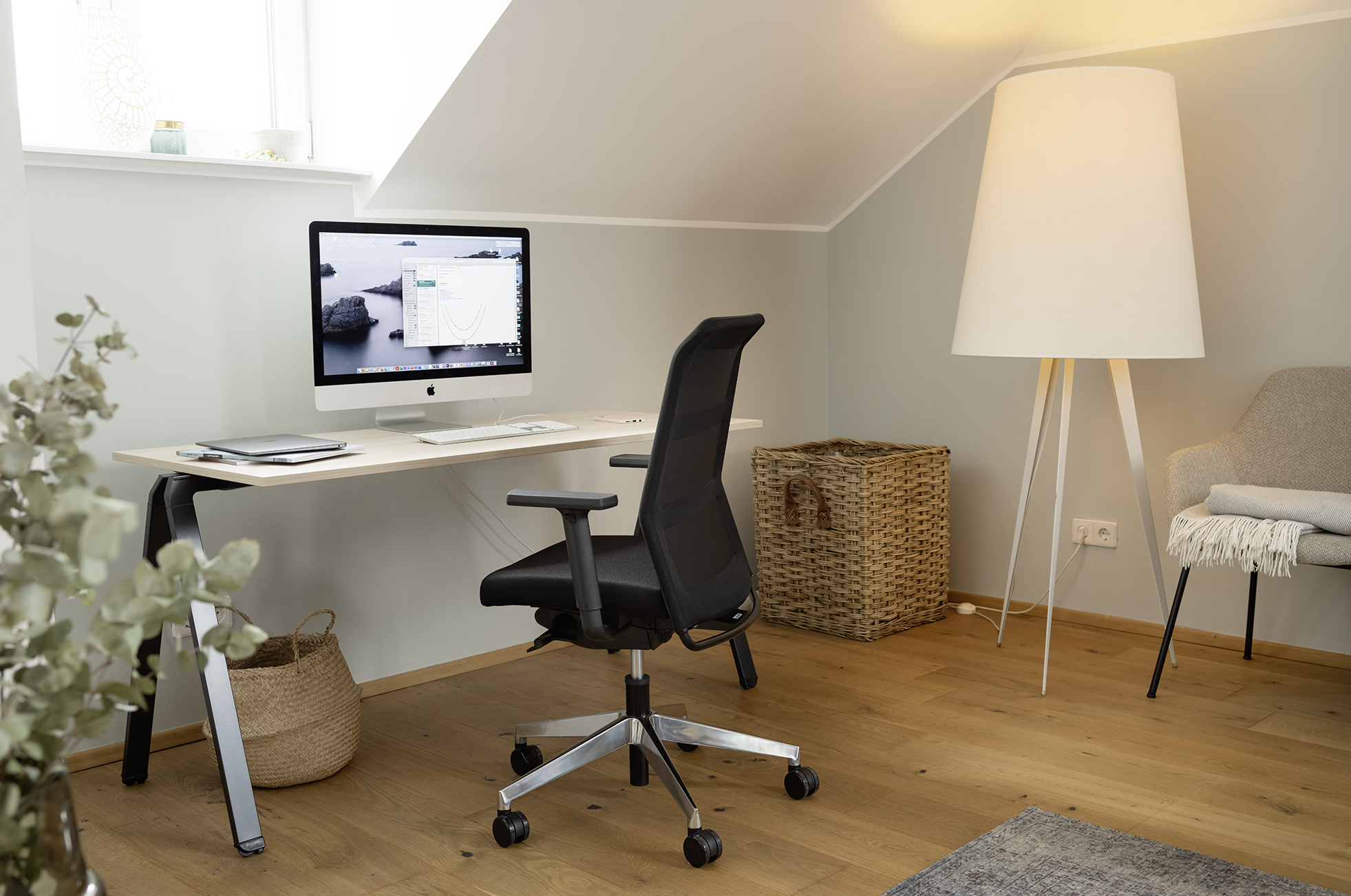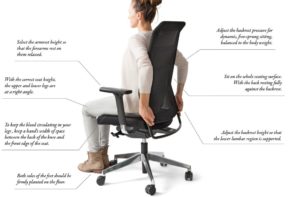Ciao kitchen chair! Work ergonomically even at home.
By Helena Pumberger, 25.11.2021

At the kitchen table, on the sofa, or even in bed? Where did you set up office at home? It’s no problem to make yourself comfortable with your notebook on the sofa for a short time. However, for a longer-term move to working from home, care should be taken to ensure an ergonomic working environment.
The ergonomics of sitting.
Static sitting can lead to serious health problems in the long run. In the worst case, there is even the threat of a slipped disc, because the human body was originally designed for movement. How the lack of physical activity causes damage to the musculoskeletal system is easily explained:
The spinal column consists of bony vertebral bodies and the cartilaginous intervertebral discs (with a soft, gelatinous inner core), which lie between the vertebral bodies. The intervertebral discs serve as a buffer, or cushion, to balance out pressure. The intervertebral discs are supplied by nutrients through the compression and decompression of the spinal column. This happens, for example, when walking, changing the sitting posture, standing up or lying down. Nutrient fluid is pumped into the intervertebral discs by these micro-movements. A lack of physical activity, and static permanent sitting lead to a deficiency in the intervertebral discs. As a result, they lose elasticity, become cracked, the gelatinous mass can then escape and eventually cause a herniated disc.
“Keep moving. Even small changes in position will keep your discs fit.”
Full backing even working from home.
First and foremost, it is therefore important to switch from the kitchen chair to a suitable office chair that allows for dynamic, free-sprung sitting. This must be height adjustable and provide good back support. The right desk should have a sufficiently large work surface. Integrated height adjustment is also an advantage here. Below you will find a checklist for how to adjust your office chair correctly:

Space requirements for your office at home.
Ideally, your office is located in a separate room at home. This should have a room height of 2.5 metres with a minimum size of eight square metres. A window provides sufficient fresh air and daylight. The workstation should be arranged parallel to the window so that light can enter from the side, which in turn avoids glare and reflections. In addition, curtains and blinds create the necessary darkening. If daylight is no longer sufficient, artificial light with an illuminance of around 300 lux is required in the immediate working environment. If you still work on a laptop, you would do well to get a larger screen as well. The use of an external keyboard and mouse is also beneficial.
Despite all efforts to set up workplaces as ergonomically as possible, the cause of musculoskeletal disorders is not only unsuitable office chairs or incorrect sitting, but continuous sitting in general – combined with static working behaviour and intensive VDU work. The key to better health in the office is therefore to be found in the interplay between human movement behaviour, a room with a feel-good atmosphere and the ergonomic workplace.




